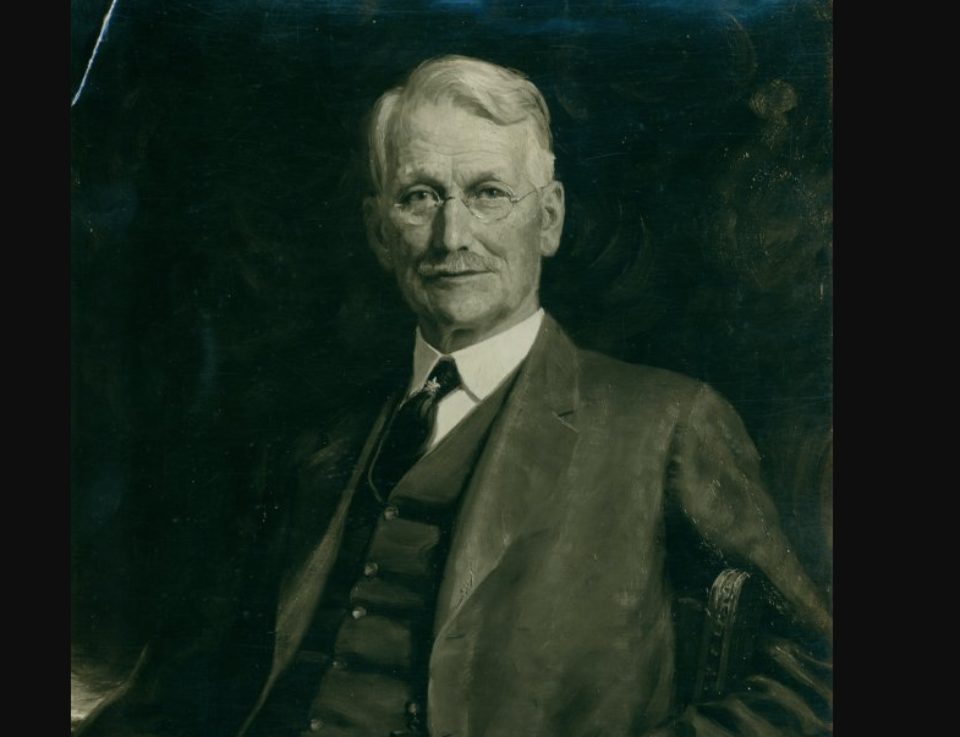Do teachers get to be figures of legend? It seems that in Guelph, at least three of them did.
Their names were William Tytler (for whom a school was named), James Davison and David Young. In their own lifetimes they came to be known as The Three Wise Men of Guelph, although some of their friends and colleagues called them The Three Chalketeers. In an article published in 1931, Maclean’s Magazine referred to them as the three patriarchs of pedagogy.
Guelph’s oldest public secondary school (third oldest in Ontario), Guelph Collegiate Vocational Institute (GCVI) dates back to 1886 when the Guelph High School – formerly the Guelph Grammar School – became the Guelph Collegiate Institute. In its various incarnations it had a series of headmasters, including James Murison 'Terrible Temper' Dunn, who began every school day by placing the strap on his desk in readiness for dealing out corporal punishment. The Three Wise Men would prove to be cut from a different sort of educational cloth.
Dr. William Tytler was born to Scottish settlers in Nichol Township near Elora in 1842. He attended the Elora Grammar School and then the University of Toronto where in 1862 he was awarded the Governor General’s gold medal for natural science. Tytler also served in the university’s militia unit.
After graduating from university, Tytler was headmaster at schools in Carlton Place, Smith’s Falls and St. Mary’s. By the time he arrived in Guelph in 1875, he had a reputation as an excellent teacher and headmaster, and a progressive educator. He would be GCI’s principal until 1892. Edith Crowe, a former student of Tytler’s who was from a prominent Guelph family, wrote of him in 1927:
“Books have been written about schoolmasters and their influence on the lives and characters of pupils. The students who enjoyed the rare privilege of being taught by Mr. Tytler might have written such a book from their own experiences. His great subject was English Literature. Words and sentences, lines of verse, immortal thought, were held high, turned this way and that, till they fairly scintillated before the minds of his class, never to be forgotten … he loved responsive minds as a gardener loves an opening flower.”
When In Flanders Fields first appeared in Punch magazine in 1915, Tytler excitedly called to his wife Martha to come and read “this immortal verse that Jack McCrae (another former student) has written.”
After retiring from his position as principal in 1892, Tytler served as public school inspector for Guelph and secretary of the Board of Education. He was also chairman of the Guelph Public Library Board and chairman of the library committee. In 1924, the University of Toronto granted him a degree as Doctor of Laws.
Dr. Tytler died on Sept. 14, 1932. He was survived by his wife, a daughter and a son. According to a short biography of Tytler in the Historical Atlas of the County of Wellington in 1906, “Mr. Tytler, it can be said without exaggeration, stands in the front rank of the Canadian teaching profession.”
James Davison followed Tytler as principal. He was born in Durham County in 1848 and attended high school in Port Hope. He earned his teaching degree at Victoria College in Cobourg. His first teaching jobs – at $400 a year - were at high schools in Port Hope and Whitby. Davison joined the staff of GCI in 1878 as a mathematics teacher. He liked to say that calculus was his favourite bedtime story.
Davison, whom his students nicknamed 'Davey,' would make them compete in solving mathematical problems for prizes of dimes and quarters, and candy from the “inexhaustible mine” of his desk. Sometimes when a student solved a problem correctly, Davison would say he got it wrong just so he could hear the student explain why his answer was right.
Davison was GCI’s Principal Emeritus from 1923 to 1929. He also served as president of the Ontario Education Authority. Davison died in 1935.
David Young was born in Uxbridge, Canada West (Ontario), in 1859. He went to elementary school there, and then earned his teaching certificate at the age of 16, one year younger than the legal minimum age for the profession at that time. His first teaching job was in a school near his hometown. He was a husky young man, which proved to be an advantage when the boys got too rowdy.
Young went to Guelph in 1886 when he learned of a vacancy at GCI. He was recommended for the job by Dr. John Sneath, the Inspector of High Schools. “He Knew I needed the money,” Young recalled in later years. But first he had to pass a test for the principal, Dr. Tytler.
“Dr. Tytler took me by the arm,” said Young, “and with that long stride of his walked me down through the town and around blocks of streets at a terrific pace. Finally, dripping with perspiration and out of breath, he landed me back at the collegiate, still groping at the motive for the walk Marathon. Eventually he told me my predecessor had the ‘heaves’ and the ‘wheezes’ and he wanted to make sure my lungs were all right.”
Young got the job. He later became principal of Central School and eventually became a supervising principal of public schools. He was offered the principalship of a model bilingual school in Ottawa, but chose to remain in Guelph. Like Davison, he served as president of the Ontario Education Association. He was co-author of several text books that were in use in Ontario schools for many years. When Young died in 1936, Guelph schools closed for a day in his honour.
Many of the young people taught by The Three Wise Men of Guelph went on to gain fame in their own right. Among them were John McCrae, opera star Edward Johnson and politicians George A. Drew and Hugh Guthrie.



